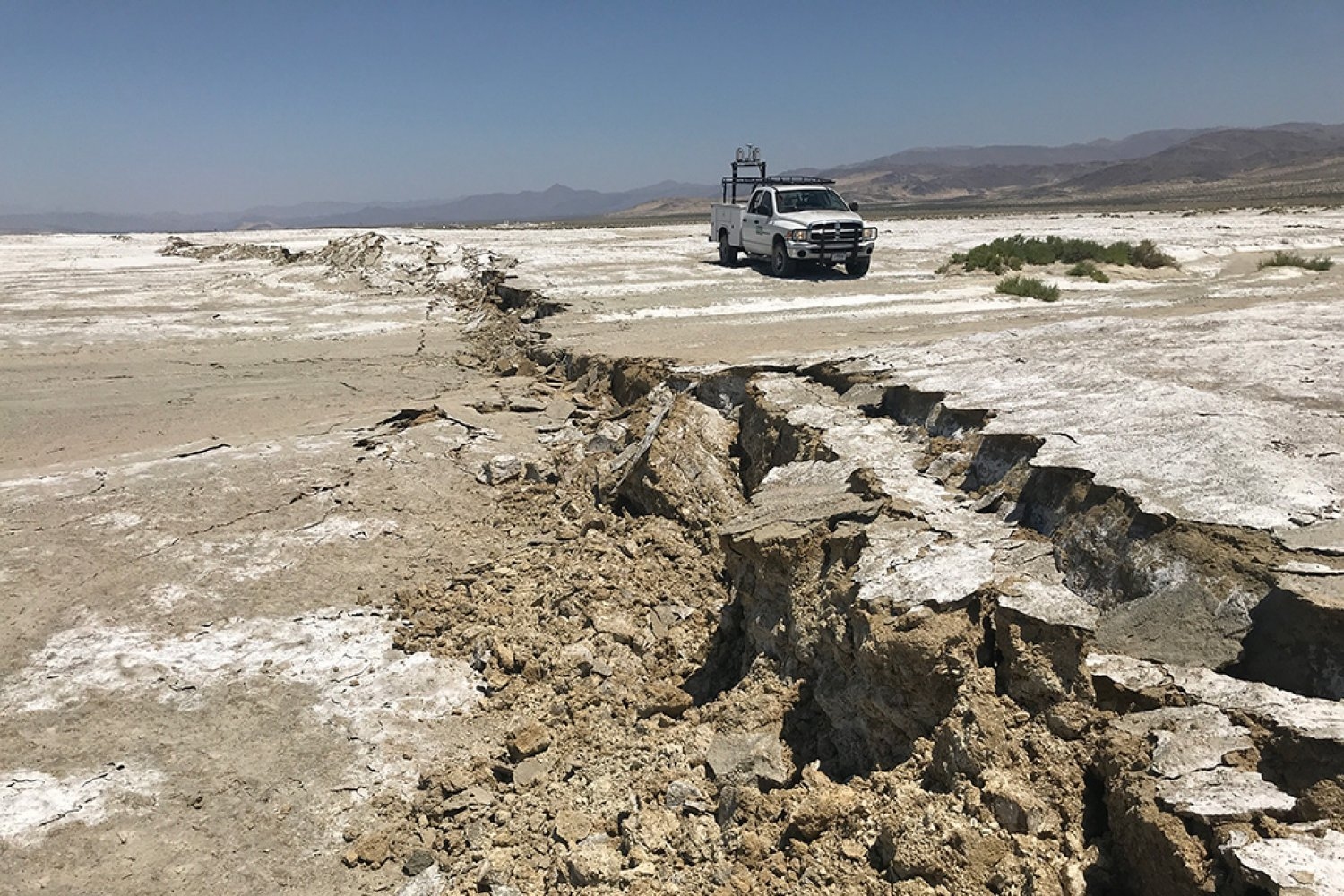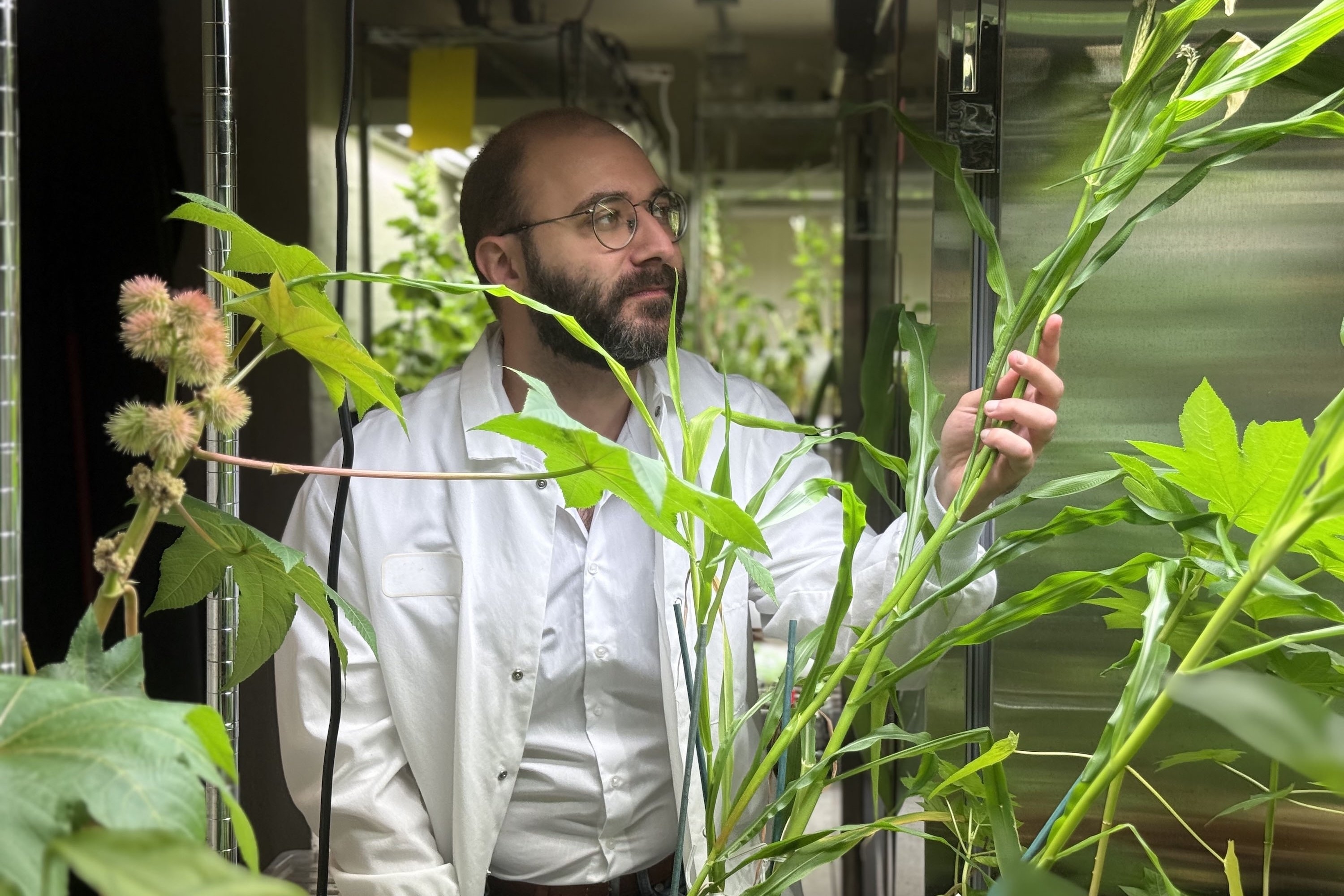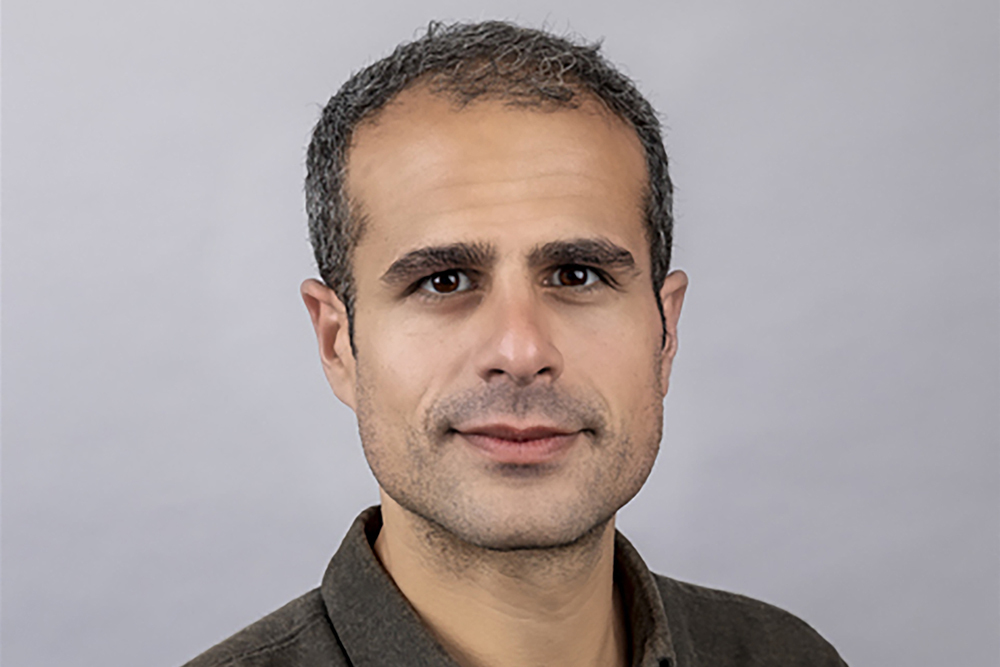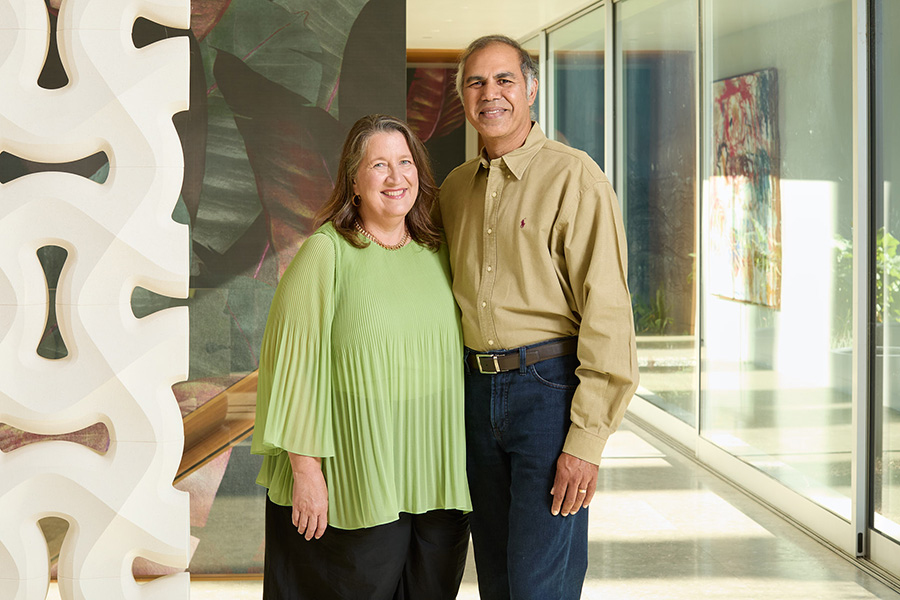Earthquake damage at deeper depths occurs long after initial activity
Earthquakes often bring to mind images of destruction, of the Earth breaking open and altering landscapes. But after an earthquake, the area around it undergoes a period of post-seismic deformation, where areas that didn’t break experience new stress as a result of the sudden change in the surroundings. Once it has adjusted to this new stress, it reaches a state of recovery.
Geologists have often thought that this recovery period was a smooth, continuous process. But MIT research published recently in Science has found evidence that while healing occurs quickly at shallow depths — roughly above 10 km — deeper depths recover more slowly, if at all.
“If you were to look before and after in the shallow crust, you wouldn’t see any permanent change. But there’s this very permanent change that persists in the mid-crust,” says Jared Bryan, a graduate student in the MIT Department of Earth, Atmospheric and Planetary Sciences (EAPS) and lead author on the paper.
The paper’s other authors include EAPS Professor William Frank and Pascal Audet from the University of Ottawa.
Everything but the quakes
In order to assemble a full understanding of how the crust behaves before, during, and after an earthquake sequence, the researchers looked at seismic data from the 2019 Ridgecrest earthquakes in California. This immature fault zone experienced the largest earthquake in the state in 20 years, and tens of thousands of aftershocks over the following year. They then removed seismic data created by the sequence and only looked at waves generated by other seismic activity around the world to see how their paths through the Earth changed before and after the sequence.
“One person’s signal is another person’s noise,” says Bryan. They also used general ambient noise from sources like ocean waves and traffic that are also picked up by seismometers. Then, using a technique called a receiver function, they were able to see the speed of the waves as they traveled and how it changed due to conditions in the Earth such as rock density and porosity, much in the same way we use sonar to see how acoustic waves change when they interact with objects. With all this information, they were able to construct basic maps of the Earth around the Ridgecrest fault zone before and after the sequence.
What they found was that the shallow crust, extending about 10 km into the Earth, recovered over the course of a few months. In contrast, deeper depths in the mid-crust didn’t experience immediate damage, but rather changed over the same timescale as shallow depths recovered.
“What was surprising is that the healing in the shallow crust was so quick, and then you have this complementary accumulation occurring, not at the time of the earthquake, but instead over the post-seismic phase,” says Bryan.
Balancing the energy budget
Understanding how recovery plays out at different depths is crucial for determining how energy is spent during different parts of the seismic process, which includes activities such as the release of energy as waves, the creation of new fractures, or energy being stored elastically in the surrounding areas. Altogether, this is collectively known as the energy budget, and it is a useful tool for understanding how damage accumulates and recovers over time.
What remains unclear is the timescales at which deeper depths recover, if at all. The paper presents two possible scenarios to explain why that might be: one in which the deep crust recovers over a much longer timescale than they observed, or one where it never recovers at all.
“Either of those are not what we expected,” says Frank. “And both of them are interesting.”
Further research will require more observations to build out a more detailed picture to see at what depth the change becomes more pronounced. In addition, Bryan wants to look at other areas, such as more mature faults that experience higher levels of seismic activity, to see if it changes the results.
“We’ll let you know in 1,000 years whether it’s recovered,” says Bryan.
Latest MIT News
- Why some quantum materials stall while others scaleIn a new study, MIT researchers evaluated quantum materials’ potential for scalable commercial success — and identified promising candidates.
- Engineering next-generation fertilizersMIT postdoc Giorgio Rizzo harnesses plant chemistry to design sustainable fertilizers that could reshape modern farming.
- Optimizing food subsidies: Applying digital platforms to maximize nutritionAn algorithm can change the face of food assistance policy in the Global South, says MIT assistant professor and J-WAFS researcher Ali Aouad.
- Checking the quality of materials just got easier with a new AI toolActing as a “virtual spectrometer,” SpectroGen generates spectroscopic data in any modality, such as X-ray or infrared, to quickly assess a material’s quality.
- Helping scientists run complex data analyses without writing codeCo-founded by an MIT alumnus, Watershed Bio offers researchers who aren’t software engineers a way to run large-scale analyses to accelerate biology.
- New MIT initiative seeks to transform rare brain disorders researchThe Rare Brain Disorders Nexus aims to accelerate the development of novel therapies for a spectrum of uncommon brain diseases.













